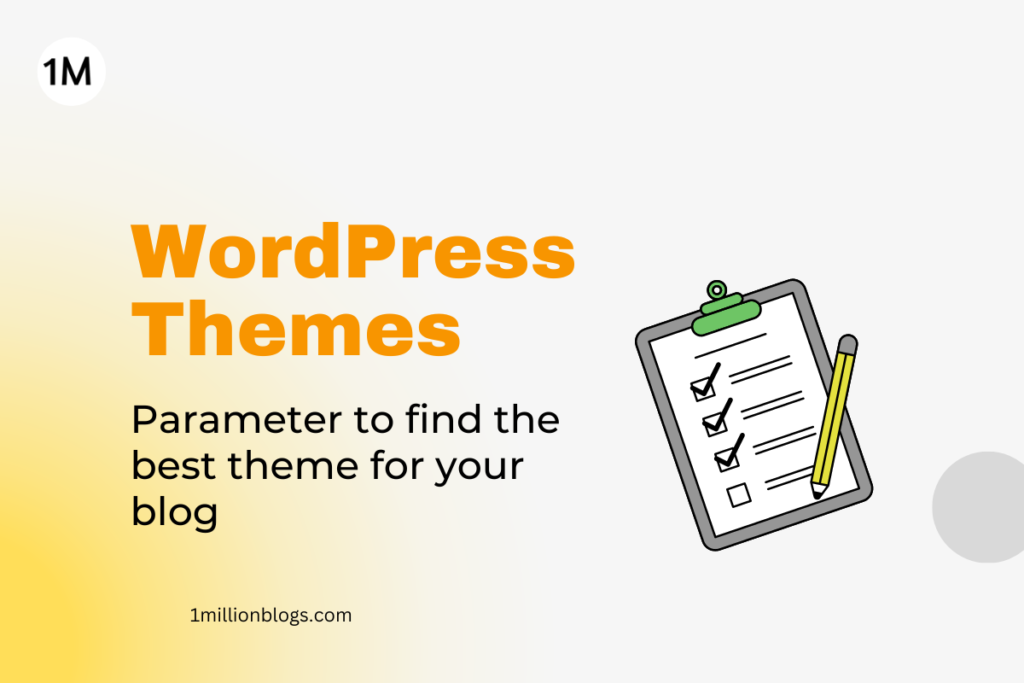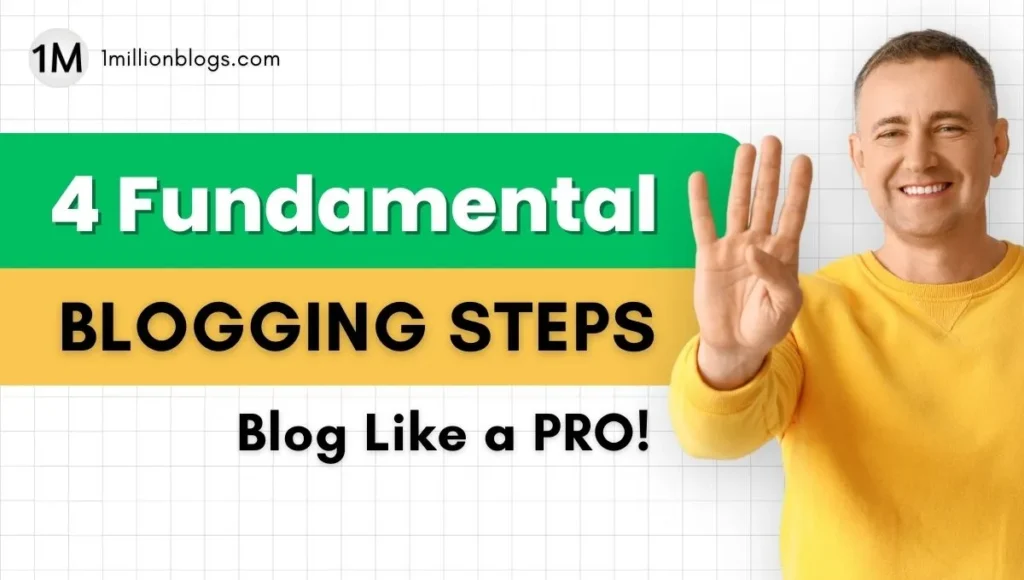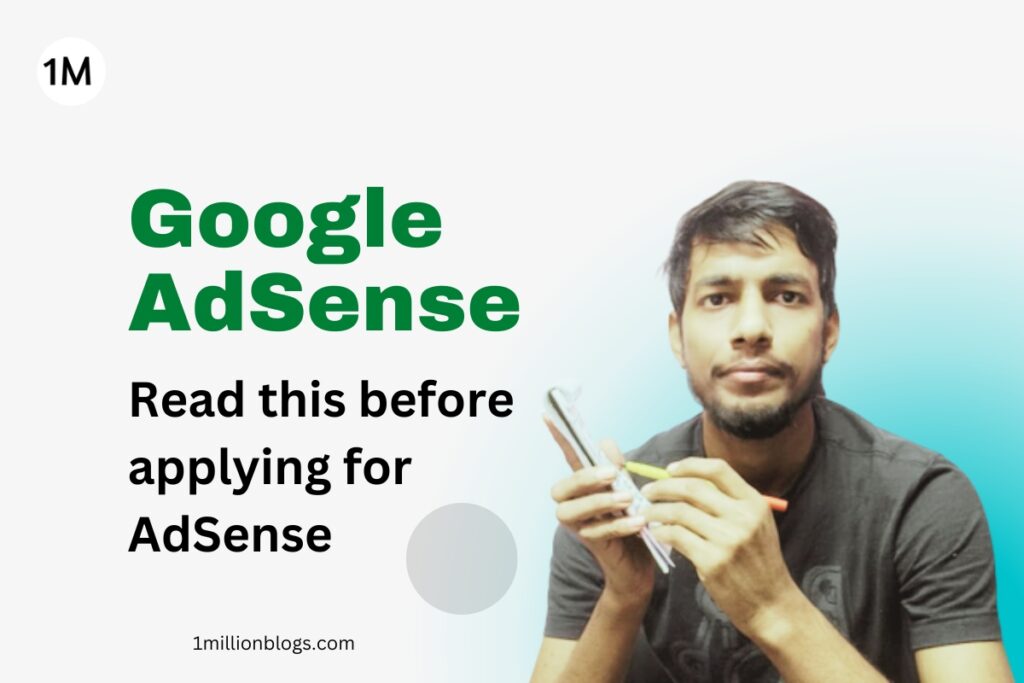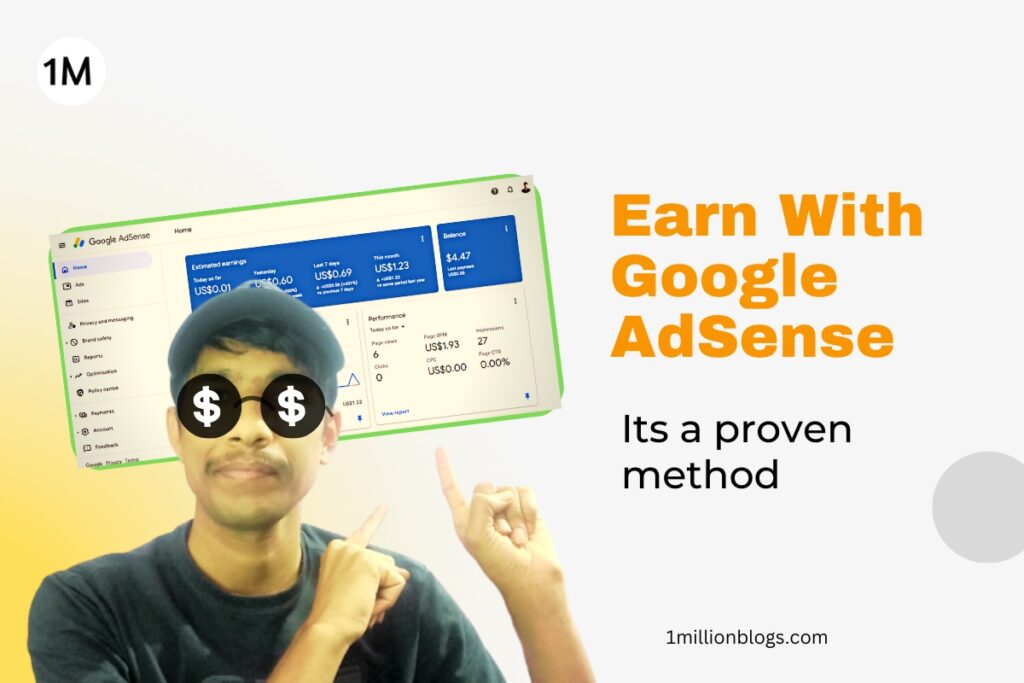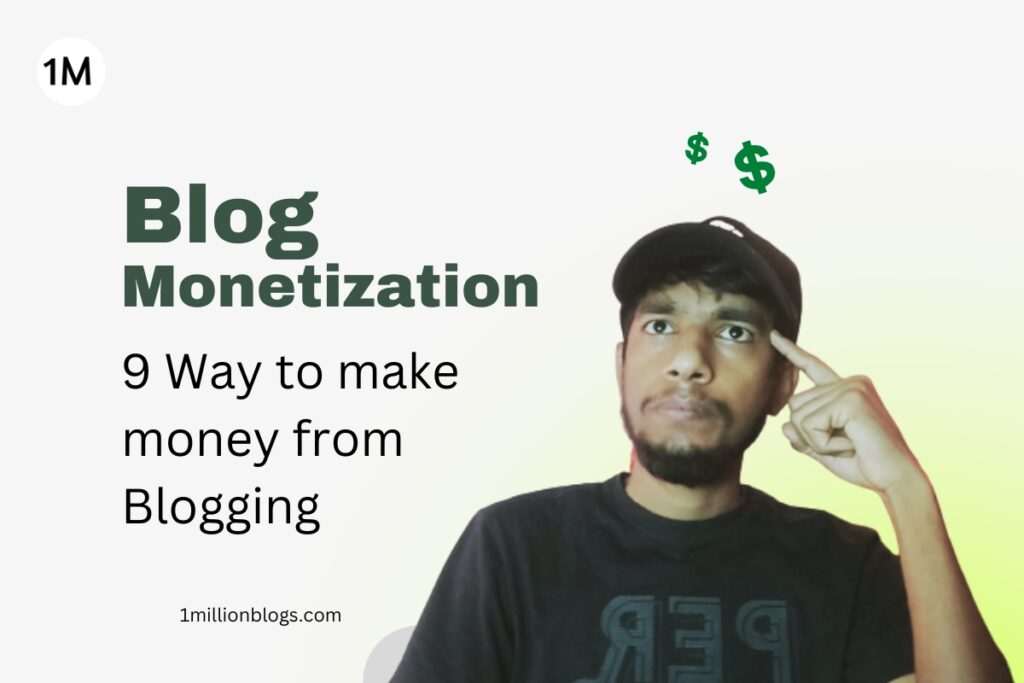Are you searching for the best WordPress theme for your site but confused after looking at thousands of them?
Well, look no more. Read this blog and understand all the parameters required while selecting the best-suited WordPress theme for your website.
Ideally, a WordPress theme should be highly reliable, well-optimized, performance-based, and completely match your website’s niche and objectives.
You will find both free and paid themes on the market. To check for all the free themes, visit WordPress.org themes, while paid themes are available on the respective websites of the theme creators, or theme marketplaces like “Envato.”
However, for bloggers, it is advisable to use a free theme, before shifting to the paid version.
1. Set your priorities
First, you need to understand the requirements of your website; such as who your target audience is, what services you want to sell, whether you want to build a simple blogging website, and so on.
You can also conduct a competitor analysis to find out what kind of themes they are using. You can make a note of the sections that you liked and look for areas where you can improve.
Prepare a checklist for it:
- What kind of header your want?
- Do you want sticky or no sticky header
- Position of logo and its layout.
- Color section and typography options
- Sidebar, left sidebar and right sidebar and their layout
- Possible layouts for blog, grid layout, etc.
- Featured image position and layout
Based on your requirements, select the theme that fulfill all these requirements.
2. Go for a responsive and customizable theme
Your theme must be responsive so that it adjusts its layout on mobile devices and in different browsers too.
Google starts indexing mobile versions first to understand the data, so make sure that your website works well on cellphones and then optimize it as per the desktop. This can be an added benefit while applying for Google AdSense.
You can pick a theme that has many customization options, including the color scheme, layout, logo design, font style, etc., to unleash your creativity.
3. Check its compatibility with plugins
It’s always a good practice to check the compatibility of themes with different plugins. You have to install several plugins for your website, and if they don’t work well together, it might create a problem.
Plugins play a crucial role in adding extra features and functionality to your website. So, pay extra attention to this point. If you want a “drag-and-drop” feature, pick a theme that has page builder plugins like Elementor.
4. Optimize for search engines
Optimization helps in establishing a good digital presence for your website and helps search crawlers understand your website better.
Always go for a theme that takes less time to download the website, as nobody wants to wait when they have many other options. Luckily, WordPress offers themes that can be optimized easily. A well-optimized theme can increase your rankings in search engines.
Most traffic comes from mobile devices, so your theme must be optimized for a mobile screen.
5. Policy and support
A good support system and a transparent policy are needed for understanding the themes properly. Consider themes that provide 24/7 customer support to help you solve your query. Few themes offer support through the WordPress.org forums.
6. Read the reviews and ratings
Positive ratings and detailed reviews are good indicators for deciding on a theme. Read the reviews carefully to find out the problems or pros people have mentioned. You can read the reviews in the review section and make a sound decision.
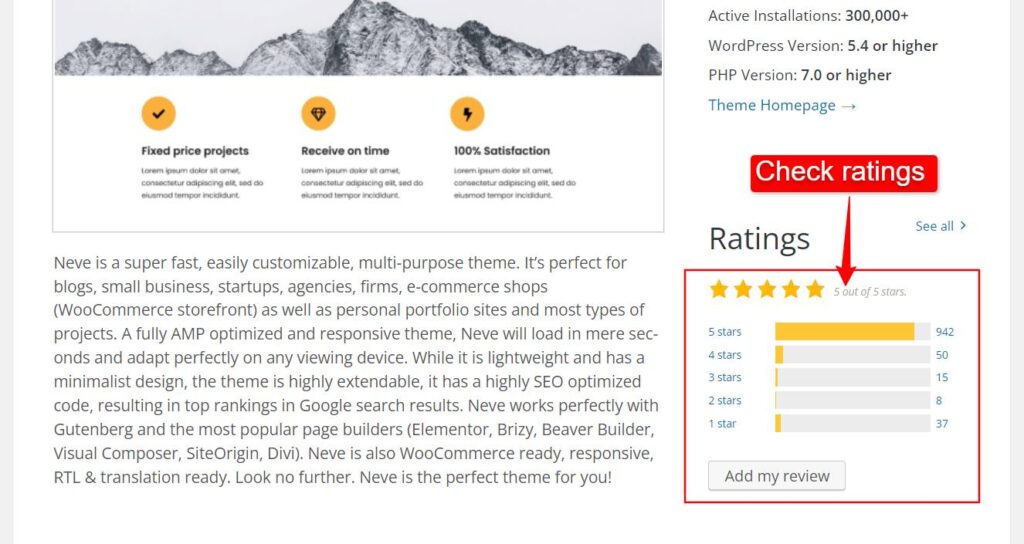
Note: This is the rating of the “Neve” theme. You can also check the rating of the theme that you are considering for your site.
7. Check its update
Select a theme that is regularly updated, at least every 3 months. WordPress introduces new features and security updates regularly, so it’s important to use a theme that is eligible for these updates.
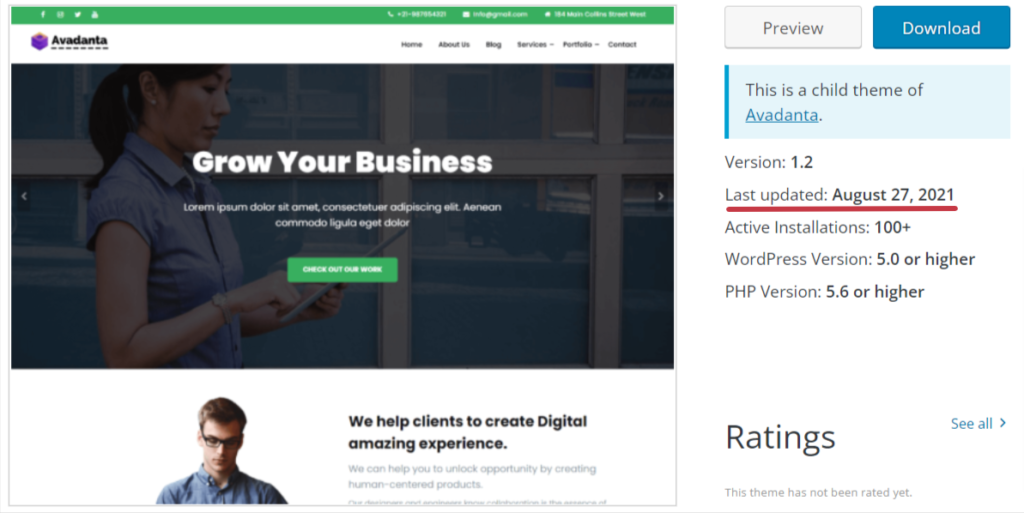
The above theme is not updated for more than 1 year which makes it outdated and difficult to use with new plugins and WordPress updates.
When a theme is constantly updated, you won’t have to worry about security or bug issues, and it also improves your site’s performance.
8. Choose simplicity and UI-friendly theme
Choose themes that are simple to use without those flashy and extra-required designs. These designs may look good, but they lag and don’t go well with plugins either. A theme should be simple, and precise; don’t make your audience feel lost while navigating.
You can click on the “Preview” tab to check how the theme will look just like the one shown below:
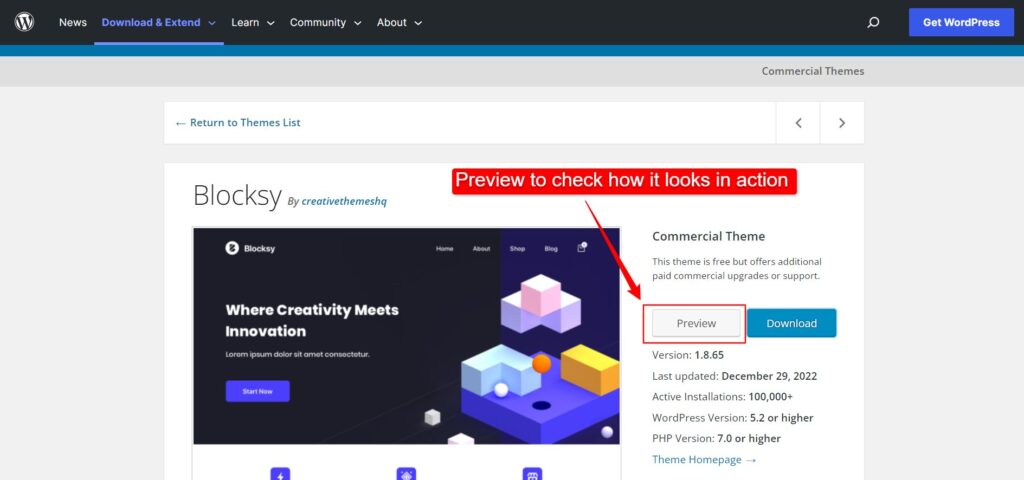
This is the Preview of the “Blocksy” theme on WordPress.org
Conclusion
We have mentioned some parameters above that you need to consider before deciding on a theme for your website. Read the reviews and choose a theme that is reliable, fast, and user-friendly. You can look through our list of the top ten WordPress themes to see which one is right for your website.
